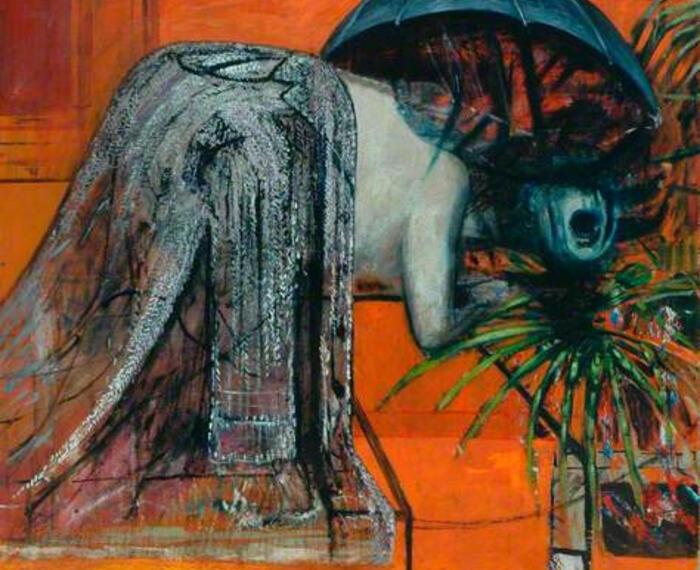

Solomon Yudovin (b.1892 Beshenkovichi, near Vitebsk, Russia - d. 1954) was first taught art by Yehudah Pen in 1906. In 1910 Yudovin moved to Saint Petersburg, where he studied initially at the School of the Society for Encouragement of Art, and then in 1911–1913 with Mstislav Dobujinsky, one of Chagall’s first teachers. He matured as an artist during the Russian Revolution, and spent the years 1918–1923 in Vitebsk, at that time an important centre for the Russian avant-garde but Yudovin did not embrace modernism and remained a figurative, realistic artist throughout his life. He was a graphic artist who excelled in wood engraving and book illustration and, between 1920 and 1940, most of his work was devoted to Jewish themes. In 1920, Iudovin and M. Malkin published the album Yidisher Folks-Ornament (Jewish Folk Ornament), which included 26 linocuts based on his earlier copies of Jewish folk art, a collection of which is at the Israel Museum in Jerusalem.